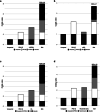Associations of polygenic risk score, environmental factors, and their interactions with the risk of schizophrenia spectrum disorders
- PMID: 40211091
- PMCID: PMC12094650
- DOI: 10.1017/S0033291725000753
Associations of polygenic risk score, environmental factors, and their interactions with the risk of schizophrenia spectrum disorders
Abstract
Background: Emerging evidence indicates that gene-environment interactions (GEIs) are important underlying mechanisms for the development of schizophrenia (SZ). We investigated the associations of polygenic risk score for SZ (PRS-SZ), environmental measures, and their interactions with case-control status and clinical phenotypes among patients with schizophrenia spectrum disorders (SSDs).
Methods: The PRS-SZ for 717 SSD patients and 356 healthy controls (HCs) were calculated using the LDpred model. The Korea-Polyenvironmental Risk Score-I (K-PERS-I) and Early Trauma Inventory-Self Report (ETI-SR) were utilized as environmental measures. Logistic and linear regression analyses were performed to identify the associations of PRS-SZ and two environmental measures with case-control status and clinical phenotypes.
Results: The PRS-SZ explained 8.7% of SZ risk. We found greater associations of PRS-SZ and total scores of the K-PERS-I with case-control status compared to the ETI-SR total score. A significant additive interaction was found between PRS-SZ and K-PERS-I. With the subdomains of the K-PERS-I and ETI-SR, we identified significant multiplicative or additive interactions of PRS-SZ and parental socioeconomic status (pSES), childhood adversity, and recent life events in association with case-control status. For clinical phenotypes, significant interactions were observed between PRS-SZ and the ETI-SR total score for negative-self and between PRS-SZ and obstetric complications within the K-PERS-I for negative-others.
Conclusions: Our findings suggest that the use of aggregate scores for genetic and environmental measures, PRS-SZ and K-PERS-I, can more accurately predict case-control status, and specific environmental measures may be more suitable for the exploration of GEIs.
Keywords: Korea-Polyenvironmental Risk Score; Schizophrenia spectrum disorders; gene–environment interactions; polygenic risk score.
Conflict of interest statement
The authors declare no competing interests exist.
Figures


References
-
- Agerbo, E., Sullivan, P. F., Vilhjálmsson, B. J., Pedersen, C. B., Mors, O., Børglum, A. D., et al.. (2015). Polygenic risk score, parental socioeconomic Status, family history of psychiatric disorders, and the risk for schizophrenia. JAMA Psychiatry, 72(7), 635. 10.1001/jamapsychiatry.2015.0346 - DOI - PubMed
-
- American Psychiatric Association. (1994). Diagnostic and statistical manual of mental disorders DSM-IV. APA.
MeSH terms
LinkOut - more resources
Full Text Sources
Medical
Research Materials

